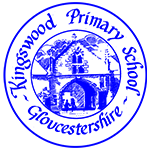- Home
- Key Information
- Curriculum
- Understanding the World (Science, Design & Technology, Computing, History, Geography, RE & Languages)
- Science
- Years 3 & 4
Years 3 & 4
Knowledge and skills:
During Year 3 & Year 4 the children learn about the following scientific areas:
Working scientifically:
The children learn to:
- ask relevant scientific questions;
- use observations and knowledge to answer scientific questions;
- set up a simple enquiry to explore a scientific question;
- set up a test to compare two things;
- set up a fair test and explain why it is fair;
- make careful and accurate observations, including the use of standard units;
- use equipment, including thermometers and data loggers to make measurements;
- gather, record, classify and present data in different ways to answer scientific questions;
- use diagrams, keys, bar charts and tables, using scientific language;
- use findings to report in different ways, including oral and written explanations/ presentations;
- draw conclusions and suggest improvements;
- make a prediction with a reason;
- identify differences, similarities and changes related to an enquiry.
Biology
Animals, including humans:
The children learn to:
- explain the importance of a nutritious, balanced diet;
- explain how nutrients, water and oxygen are transported within animals and humans;
- describe and explain the skeletal system of a human;
- describe and explain the muscular system of a human;
- describe the purpose of the skeleton in humans and animals;
- identify and name the parts of the human digestive system;
- describe the functions of the organs in the human digestive system;
- identify and describe the different type of teeth in humans;
- describe the functions of different human teeth;
- use food chains to identify producers, predators and prey;
- construct food chains to identify producers, predators and prey.
Living things and their habitats:
The children learn to:
- group living things in different ways;
- use classification keys to group, identify and name living things;
- create classification keys to group, identify and name living things;
- describe how changes to an environment could endanger living things.
Plants:
The children learn to:
- describe the function of different parts of plants and trees;
- explore and describe the needs of different plants for survival;
- explore and describe how water is transported within plants;
- describe the plant life cycle, especially the importance of flowers.
Chemistry
Materials and their uses:
The children learn to:
- compare and group rocks based on their appearance and physical properties, giving a reason;
- describe how fossils are formed;
- describe how soil is made;
- describe and explain the difference between sedimentary and igneous rock.
Sates of matter:
The children learn to:
- group materials based on their state of matter (solid, liquid, gas);
- describe how some materials can change state;
- explore how materials change state;
- measure the temperature at which materials change state;
- describe the water cycle;
- explain the part played by evaporation and condensation in the water cycle.
Physics
Electricity:
The children learn to:
- identify and name appliances that require electricity to function;
- construct a series circuit;
- identify and name the components in a series circuit (including cells, wires, bulbs, switches and buzzers);
- draw a circuit diagram;
- predict and test whether a lamp will light in a circuit;
- describe the function of a switch in a circuit;
- describe the difference between a conductor and insulators, giving examples of each.
Forces and magnetism:
The children learn to:
- explore and describe how objects move on different surfaces;
- explain how some forces require contact and some do not, giving examples;
- explore and explain how magnets attract and repel in relation to objects and other magnets;
- predict whether objects will be magnetic and carry out and enquiry to test this out;
- describe how magnets work;
- predict whether magnets will attract or repel and give a reason.
Light:
The children learn to:
- describe what dark is (the absence of light);
- explain that light is needed in order to see;
- explain that light is reflected from a surface;
- explain and demonstrate how a shadow is formed;
- explore shadow size and explain;
- explain the dangers of direct sunlight and describe how to keep protected.
Sound:
The children learn to:
- describe how a sound is made;
- explain how sound travels from a source to our ears;
- explain the place of vibration in hearing;
- explore the correlation between pitch and the object producing a sound;
- explore the correlation between the volume of a sound and the strength of the vibrations that produced it;
- describe what happens to a sound as it travels away from its source.
